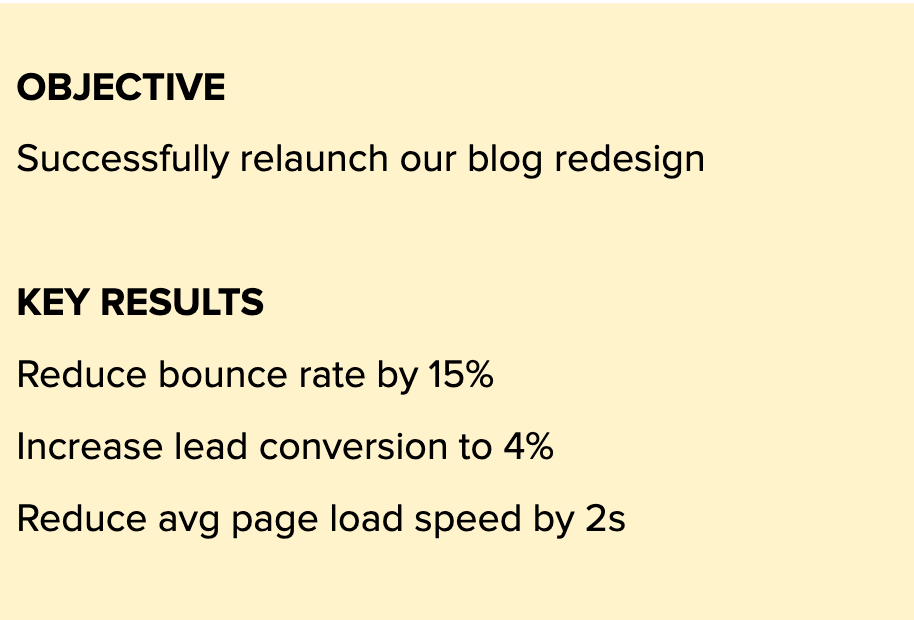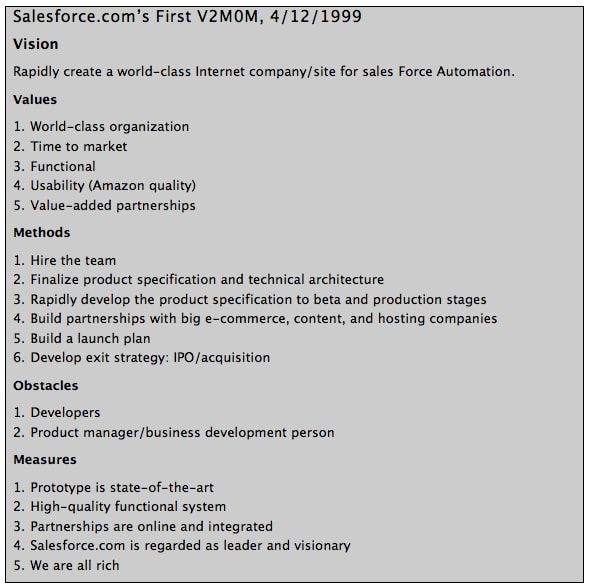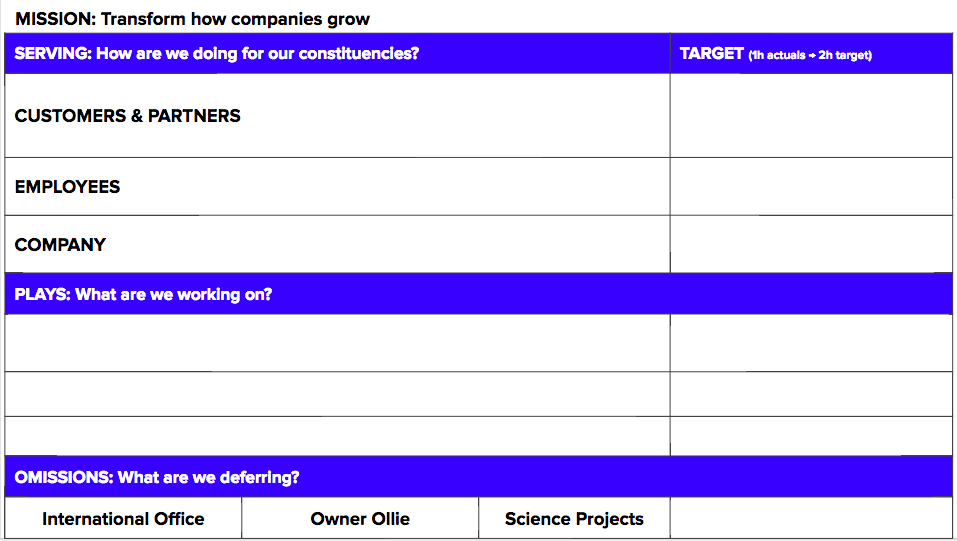How To Set Successful Marketing Team Goals (3 Frameworks)

A good goal-setting framework motivates your team to strive for performance and achievement, while identifying the best way to spend your time and resources.
But it’s not enough to just hit your goals:
Achieving your goals should be helping you drive the business forward.
It’s all too easy to set vanity goals (get 10,000 followers on Twitter) that have no effect on the business. Or to set marketing goals that aren’t aligned with other teams.
That’s why picking the right framework for setting team goals is so important.
What does a good team goal setting framework look like?
While there is no universally “best” framework, the good ones have a few things in common.
A good goal-setting framework should help you and your marketing team:
- Clearly define what “success” looks like
- Narrow your focus
- Define what is off limits
- Align to company strategy ( and your go-to-market motion )
- Link your activities to how you’ve set up your marketing budget
With that, let’s look at 3 ways you can set team goals for marketing.
1. OKRs: Objectives and Key Results
Everyone tries OKRs at some point: they’re a well-documented part of the inner workings of Google, and, well, anything Google does, people will try to copy.
OKRs are based on a qualitative Objective and quantitative Key Results that measure progress against that objective.
So for example:

You run OKRs against a specified timeframe (usually quarterly) and then score yourself on how well you achieved them.
The novel thing about OKRs is that they’re designed to stretch your team. If you score perfectly on your KRs, that means your goal wasn’t ambitious enough. And therefore you set a stretch goal, try to reach the goal, but understand that you’re typically going to land somewhere between 40–70% of your target.
Here is someone from Google explaining OKRs:
I think OKRs are okay. We used OKRs during my time at ReferralCandy and I think ultimately the goal-setting process and the idea of OKRs was much more valuable than the OKRs themselves.
That being said, some teams love their OKRs.
When everyone is bought in, and everyone’s OKRs are connected or related, they’re a wonderful thing to have in driving alignment. Imagine being part of a huge company across several continents, and you’re setting up meetings with team members you’ve never met. Well, before you set up the meeting, you can look at their OKRs to see what their goals and priorities are, which is a big help in driving alignment across big teams.
However, some people hate OKRs.
My theory is that this comes down to the fact that OKRs tend to lose their efficacy over time, because of the lack of accountability around the “stretch goal” aspect. You get credit for setting an ambitious goal, but if you fail hitting it, it’s still okay. This kind of stuff eats up a lot of team attention, and eventually OKRs can become more performative instead of driving performance.
OKRs, while powerful, are also missing some of the key elements of what makes a good framework for team goals.
I think that’s why most marketers and teams eventually create their own in-house prioritization and goal setting method, which brings us to our next framework.
2. V2MOM : Vision, Values, Mission, Obstacles, Measures
V2MOM is from Salesforce, and Marc Benioff writes about it in his book (read my summary of Benioff’s Behind The Cloud here).
V2MOM is much more complex than OKR, because it tries to give the goal-setting a bit more surrounding context.
Here’s what Salesforce’s first V2MOM looked like.

As the company grew, Benioff was facing problems around setting priorities to focus the team.
A framework like V2MOM is useful for setting team goals because it ticks all the boxes in our criteria for what is needed in a prioritization framework. It’s set up like this:
- Vision: what is the long-term objective of the company?
- Values: what are beliefs that we will never compromise on?
- Methods: how will you get things done?
- Obstacles: what challenges do you expect to face?
- Measures: how will you track your progress?
Notice that most of these items are beyond just the marketing team’s scope. That’s the point. Good goal-setting frameworks are those that are done by every team throughout the entire company.
Salesforce has written more on V2MOM here.
3. MSPOT: Mission, Strategy, Plays, Omissions, Targets
MSPOT is an all-encompassing strategy, planning and goal-setting framework we use at HubSpot.
MSPOT is similar to V2MOM in that it bridges the big picture and day-to-day execution. It looks something like this:

Every MSPOT has 5 parts:
- Mission: the ‘why’ behind the company
- Serving: the stakeholders of the mission
- Plays: strategic moves we’re doing to drive the mission
- Omissions: which plays we’re consciously NOT doing
- Targets: how we’ll measure progress against our plays
Again, notice how the scope is much more than just marketing. You could operate MSPOT just within your marketing team, but the reason it’s so powerful is because everyone does it, and it’s taken very seriously from the CEO down.
The company as a whole has an MSPOT, every function has an MSPOT, every team has an MSPOT. Lots of planning goes into drawing up an MSPOT, and people are held accountable to them.
One part in particular deserves a mention. The “Omissions” part of the MSPOT is very powerful.
Usually team goal and strategy documents talk about what you’re going to achieve; rarely do they mention what you’re actively going to avoid.
The “Omissions” in the MSPOT forces teams within HubSpot to acknowledge that you can’t do everything, you can’t achieve everything, and that you’ll need to make trade-offs and de-prioritize some things.
More detail on the MSPOT in this article.
There’s no “best” way to set goals for your marketing team
Ultimately, the “best”goal-setting framework is the one works for your entire company, not just your marketing team.
As long as you’re using a framework that satisfies most of the criteria you outlined above, you’ll be in a good place.
If you’re here because you’re doing planning for your marketing team, you should read these next: